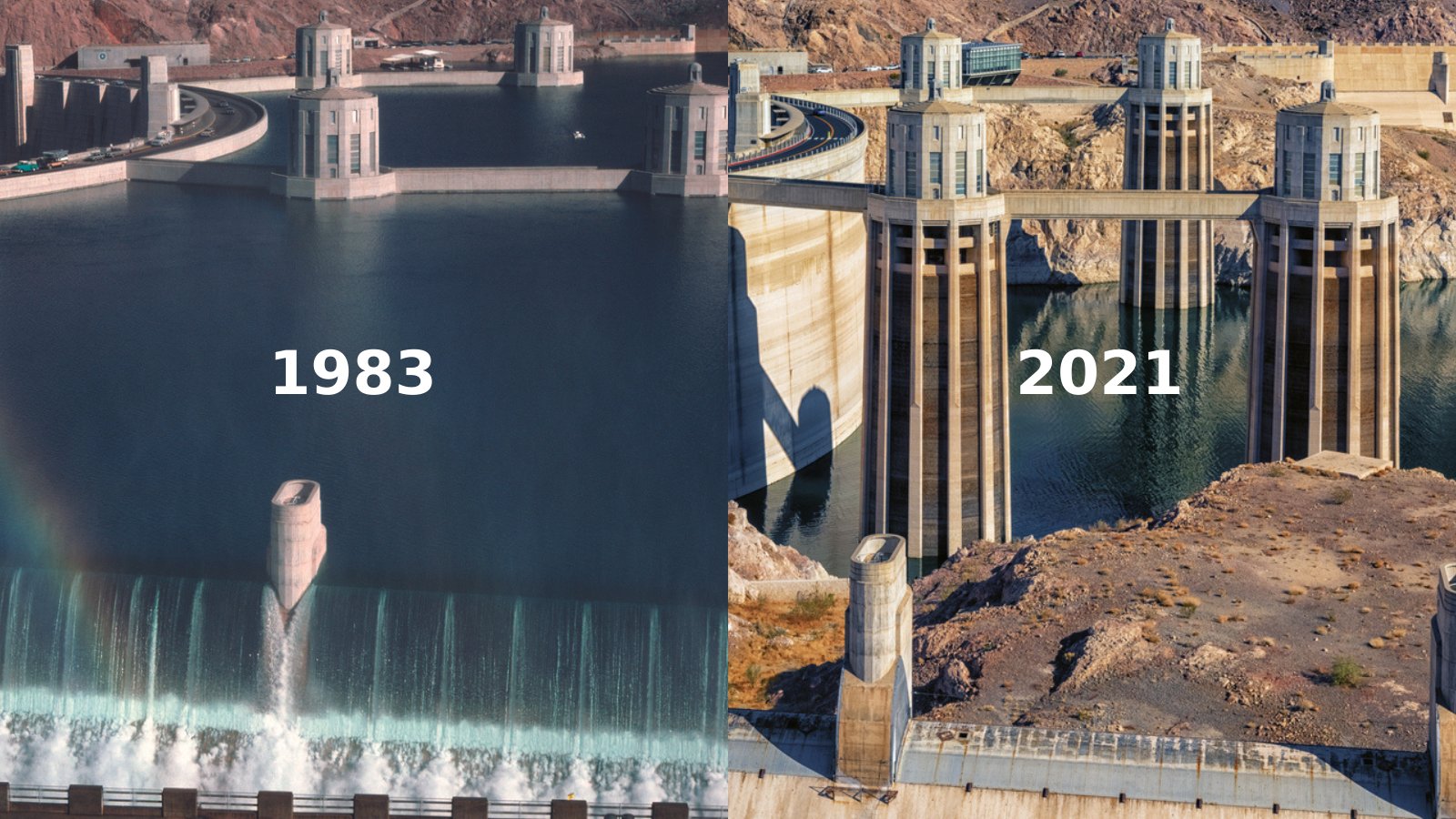On Aug. 16, 2022, the federal government declared a tier two water reduction on the Colorado River. This will limit the amount of water Southern Nevada will be allowed to withdraw from Lake Mead beginning in January 2023.
This comes one year after the federal government, prompted by the low water levels in Lake Mead, issued a water shortage declaration on the Colorado River.
In January 2022, Southern Nevada’s water allocation was reduced by 7 billion gallons. Starting in January 2023, the allocation will be reduced by an additional 1.1 billion gallons for a total of 8.1 billion gallons. Our 2023 allocation will be 275,000 acre feet of water, 4,000 acre feet less than our 2022 allocation of 279,000.
Fortunately, we have already been so successful in our conservation efforts that we only used 242,000 acre feet in 2021. If we continue to press our conservation efforts, Southern Nevada will have enough water to support its growing population for years to come. In conjunction with Southern Nevada’s cuts, under the shortage conditions, Arizona’s allocation of Colorado River water will be cut by 592,000 acre-feet, and the country of Mexico will see its allocation cut by 104,000 acre-feet.
Southern Nevada’s commitment to conservation has resulted in a 48 percent decline in per person water use per day since 2002, despite the addition of more than 750,000 new residents.
Learn how we're conserving water:
Here’s what you can do to help conserve water:
- Follow seasonal water restrictions. Only about 60 percent of single-family households comply with the year-round seasonal watering restrictions. If every resident followed the seasonal restrictions, Southern Nevada could save more water than is being cut under the shortage conditions.
- Replace unused grass with a water smart landscape. SNWA’s Water Smart Landscapes rebate program has helped the community upgrade more than 200 million square feet of lawn to water-efficient landscaping, saving more than 11 billion gallons annually.
- Report water waste. Tens of millions of gallons go to waste each year as poor irrigation practices result in water flowing off properties. Reporting this waste to local water utilities helps give property owners an opportunity to correct it; those that continue to waste water receive a violation and a water-waste fee.
For more ways to conserve water, visit https://www.snwa.com/.
To help balance Southern Nevada’s economic development activities with the community’s limited water resources, the Southern Nevada Water Authority (SNWA) develops an annual Water Resource Plan that forecasts future water demands and water supplies over the next 50 years. The plan helps local planning officials in making thoughtful decisions about economic growth, development and land use within the region.

Three factors affecting supply and demand include:
- Southern Nevada’s conservation efforts have a big influence on water demands. As our local population increases, water conservation helps ensure our community ‘s water needs continue to be met.
- Climate change is affecting supply and demand. Average annual Colorado River flows decreased about 20 percent since 2000; we are likely experiencing a permanent transition to lower flows due to aridification. Without continued water conservation, a warmer and drier climate will result in increased water use.
- There is a high probability Colorado River shortages will continue during the long-term planning horizon. Nevada will take shortage reductions next year and for the foreseeable future, depending on the hydrology of the Colorado River. The states that share the Colorado River are working collectively to reduce demands on the river and protect water levels in Lake Mead.
The SNWA is working on the following initiatives to address changing conditions:
- Prohibit new golf course development.
- Update development standards for cooling technology to require high-efficiency cooling.
- Restrict grass in new developments, except for parks, schools and cemeteries. This initiative could lead to the single largest reduction in water use.
- Implement large water user policy to help ensure that new commercial customers minimize consumptive water use and provide benefits to the community commensurate with their water resource impact.
- Develop a program to help properties using septic systems convert to the municipal sewer system where the wastewater can be reclaimed and safely returned to Lake Mead.
As of February 2022, SNWA is working with municipalities to adopt ordinances restricting turf in new developments. This will help ensure new commercial and residential developments continue to be water efficient. In addition, Southern Nevada is implementing a new law adopted by the Nevada Legislature that essentially requires the removal and/or replacement of nonfunctional, decorative grass and sprinkler irrigation at existing commercial, multi-family, government, homeowner’s associations and other non-residential properties. The new law targets decorative grass in the Las Vegas Valley that, once replaced, will help protect the community’s water supply and economic sustainability. While incentives are currently available, qualifying properties may apply for the Water Smart Landscapes rebate that currently pays up to $3 a square foot of grass replaced with drip-irrigated plants and trees (some restrictions apply). For details and to apply, visit snwa.com.
The city is also doing its part to conserve water:
- We reduced water consumption at our facilities by 2.25 billion gallons over the last decade.
- We built LEED-certified green buildings with water-efficient landscaping and low-flow fixtures.
- We partnered with Southern Nevada Water Authority to reduce nonfunctional turf at parks, incorporate xeriscaping and replace sports fields with artificial turf.
Our 2050 Master Plan addresses long-term growth, continued water conservation and additional drought recommendations that reduce consumption to less than 100 gallons per person per day over the next 30 years.
Colorado River Compact
Learn more about the historic implications of water rights from the Colorado River.